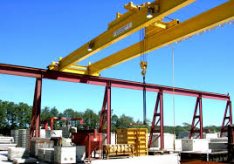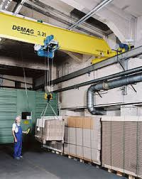Do We Need a Licence to Operate a Bridge Crane?
If unusual or awkward loads or hazardous chemicals are handled, then a dogging or rigging licence is required.
What is a Bridge Crane?
A bridge crane has two runways or rails overhead which the cranes travel on, usually part of a structure or building. It has a girder (the bridge) between both rails and a trolley with a hoist which traverses’ side to side along the bridge.
Examples of bridge cranes - one inside a building and second on an external rail structure.
Safety Law
The safety regulations in each state require the following for bridge cranes:
(1) Registration of Design
Bridge crane designs need to be registered with WorkSafe if greater than 10T rated capacity, or they are designed to handle molten metal or hazardous chemicals.
Registration of design is usually done by the manufacturer or supplier and each jurisdiction accept registration of designs from other states.
(2) Operator Licence
Operators of bridge cranes only need a (Class 12) licence if operate from a permanent cabin mounted on the crane or if the crane has more than three powered movements.
Most modern bridge cranes are pendent controlled and only have three (3) powered movements e.g. up/down, sideways and along the rails.
Therefore, most bridge crane operators do not need a licence, but remember they still need to be trained and competent.
(3) Dogman
A dogging licence (Class 4 or Riggers Class 5 Licence) is normally not required for bridge crane operation if; <10T capacity and standard loads with standard attachment points with load weights clearly placarded or known.
To better understand the difference between a rigger and a dogman, see our article ‘Rigger VS Dogman’
A dogman controlling a load.



